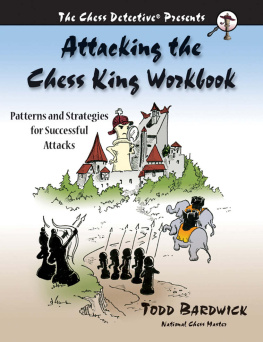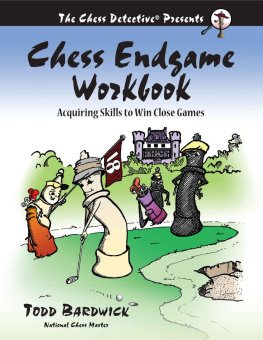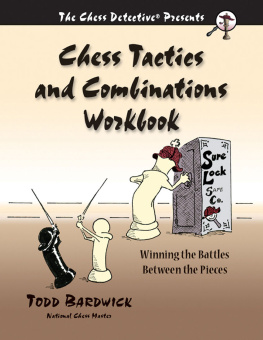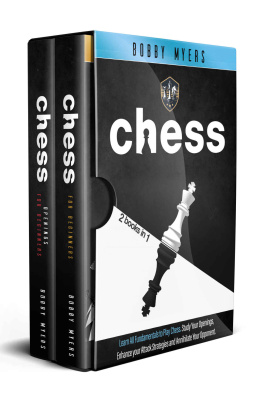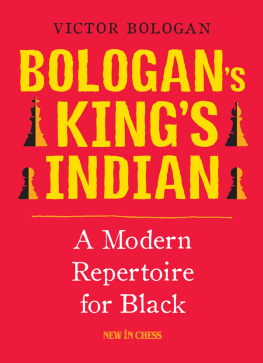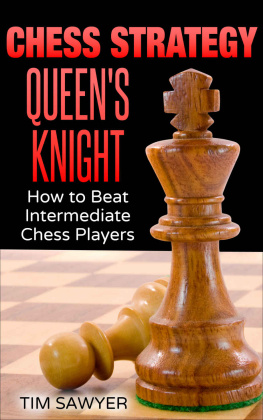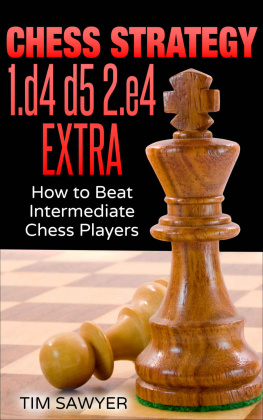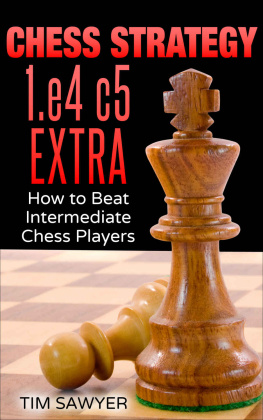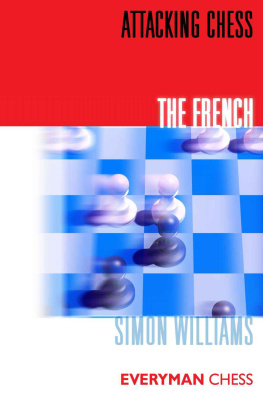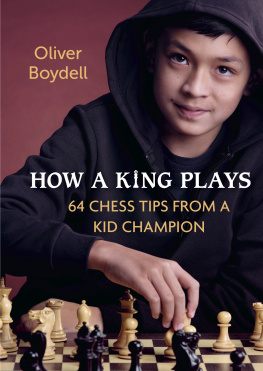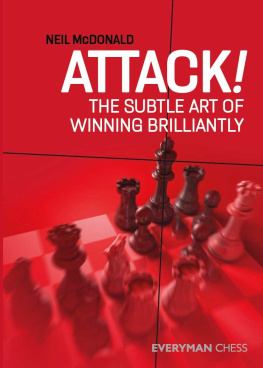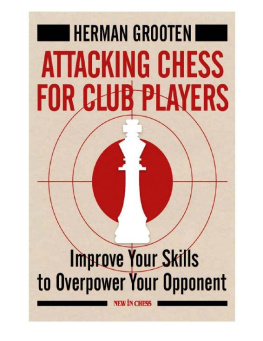Chess Detective Press
Illustrations by John Weiss and Kevin Hempstead
Attacking the Chess King Workbook
Patterns and Strategies for Successful Attacks
Copyright 2019 by Todd Bardwick. Printed and bound in the United States of America. All rights reserved. No part of this book shall be reproduced in any form or by any electronic or mechanical means including information storage and retrieval systems without permission in writing from the publisher, except by a reviewer, who may quote brief passages in a review. Included in these reserved rights are publishing on the Internet or in annotated databases. Published by Chess Detective Press, 1 Red Fox Lane, Englewood, Colorado 80111. 303-770-6696. First Edition.
First printing: June 2019
www.ColoradoMasterChess.com
ISBN-13: 978-0-9761962-4-2
Library of Congress Control Number: 2019940016
Library of Congress Cataloging-in-Publication Data available upon request
DEDICATION
This book is dedicated to chess students everywhere who will use these attacking ideas to improve their chess skills and enjoyment of the game as well as apply the lessons learned through chess to help them succeed and make logical decisions in everyday life.
May your attacks be successful and your king always be safe!
Happy Hunting!
Contents
INTRODUCTION
Savielly Tartakower, often remembered for his sharp wit and aphorisms once said, The first essential for an attack is the will to attack!
More often than not, there are more attackers than defenders involved in a successful attack. Containing the king, positioning the pieces on optimum squares, and clearing a path to the king are important elements of successful attacks. Sometimes the result of an attack on the king isnt checkmate, but a gain in material that the defender had to relinquish in order to save his king.
Attacking opportunities are not possible in every position. Sometimes you have to be patient. The first World Champion Wilhelm Steinitz said, Attacks should be prepared carefully, through the accumulation of small advantages.
Control of the center is critical, as this limits counterattacks from the opponent. A central pawn blockade also limits counterplay by the defender.
Attacking with pawns is usually slower than with pieces. Beware of counterattacks from your opponent during this time. Unweakened castled positions make it more difficult to attack with pawns because of a greater chance of a pawn blockade by the defender. Keep in mind that if the pawn attack is unsuccessful, your pawns end up closer to your opponents king where he might be able to easily win them in the endgame.
Because pattern recognition and repetition are critical to developing successful attacking skills, my goal is to present a variety of realistic attacking patterns and give practical advice in a format that is easy to read and understand. Most of the problems and examples in the book are carefully selected from master and grandmaster games. An experienced player may recognize some of the more famous positions.
We will focus not only on how to attack the weakened king position, but also how to create weaknesses in the kings position. A player usually has to force weaknesses in the opponents king position at the master level. Amateur players often create weaknesses in front of their king on their own. Learning how to avoid creating weaknesses around your king is as important as learning how to attack your opponents king.
Chess can be broken down into the concepts of strategy and tactics. Tactics are the battles between pieces. Tactics are covered in detail in Chess Tactics and Combinations Workbook . Strategy is developing the best plan to achieve your goals. Chess Strategy Workbook focuses on the strategic part of the game. Attacking the Chess King Workbook combines both strategy and tactics as they relate to attacking the king.
Most chess players focus all their attention on finding the best move. You cannot correctly determine the best move without first understanding the position. Picking up clues to figure out the best way to attack the king is critical - you need to be a good detective and look for strengths and weaknesses in the position, which may be in the form of an exposed king, a potential pin or fork, a back rank mate, a weak square, or maybe an opportunity to grab some space on part of the board.
Before reading this book, you should have a working knowledge of chess basics, which you can gain by reading Chess Workbook for Children (which is also good for adults!).
The reader should work through these lessons in the order presented, since each lesson sets the stage and builds a foundation for the next.
The book is organized into three sections: Attack Preparation, Executing the Attack, and King Locations.
In the Attack Preparation section, we will first look at weaknesses in the kings position such as holes, weak squares to target, and when the king doesnt have enough defenders nearby. Secondly, you will learn the importance of proper piece positioning using raking bishops, batteries, rook lifts, the power of attacking the king with a queen and a knight, and how to open and use files. Finally, we will examine how to clear a path to the king by eliminating pawns and pieces that are protecting him.
In the Executing the Attack section, we will examine the power of forcing moves which are critical in attacking because they limit your opponents defensive choices. Then we will look at queen sacrifices and other piece sacrifices.
Finally, in the King Locations section, you will learn how to combine all the previously discussed topics and examine more closely how to attack the king when he is in the center, when the players have castled on the same side, and when the kings are castled on opposite sides of the board. Finally, we will look at attacking the king in the endgame when there are relatively few pieces still on the board.
Just as they appear in the other books in the Chess Detective Series, Appendices A and B are repeated here in order to give practical advice and reinforce consistent themes.
Appendix A is a supplement that identifies the common chess mistakes made by the novice/intermediate chess player. As you go through the list, think of it as a checklist to see what you are doing correctly and what items you need to work on.
Appendix B addresses what a chess player should be thinking about during the game when it is their move and when it is the opponents move. These steps will structure your thoughts and keep your mind thinking in an efficient, organized way.
The solutions to the problems at the end of each lesson are explained in detail in Appendix C . Each lesson contains ten Basset Hound and ten Chess Detective problems. Reading through the detailed solutions carefully is a great learning opportunity. For most of the problems, the complete answer is much longer than the answer space provided. When this is the case, use a separate piece of paper to write your answer on. My goal is to present lots of problems and examples, not fill the pages with blank lines for the answers!
If you are a novice player up to an intermediate-level tournament player, start with the easier Basset Hound problems, designated with following symbol:

